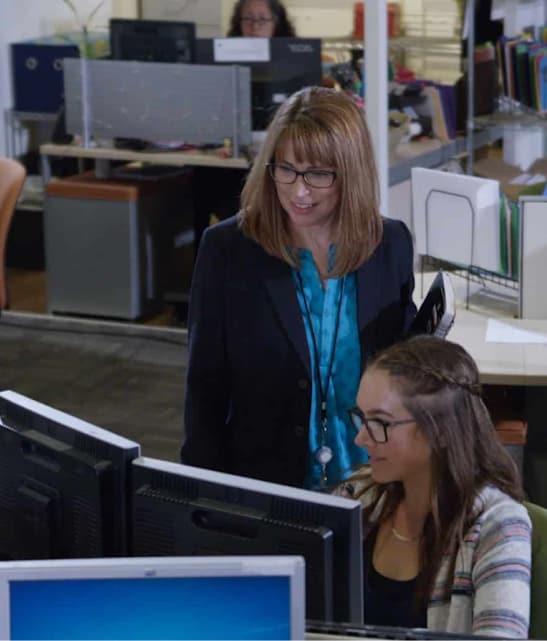Remote Patient Monitoring Billing Services
Testimonials
In the last couple of years, remote patient monitoring services have become increasingly prevalent and sought after.
However, many healthcare providers have encountered difficulties when it comes to providing and getting paid for these quality services. These roadblocks have hindered the implementation of RPM programs and decreased reimbursement for providers, which is where remote patient monitoring billing comes into play.

Remote Patient Monitoring Billing Codes
The U.S. medical system relies on five-digit Current Procedural Terminology (CPT) codes for billing purposes and insurance reimbursement. Remote patient monitoring has its own set of designated billing codes that must be utilized when billing in order to receive payment. When they are used improperly, CMS can retroactively recoup payment and require your organization to make corrections. Or, it may deny claims entirely, making it even more difficult to receive reimbursement for your services.
It is important to note that CPT code 99091 still may only be used for services provided by a physician or other qualified health care provider (QHCP) for the required minimum of 30 minutes per 30-day period. The work of other clinical staff cannot be counted. Fortunately, the newer codes available for RPM services only require a minimum of 20 minutes every 30 days, and the work of all providers and clinical staff can be included. This saves time, money, and makes it easier for other staff to fulfil tasks like filling, record keeping, and claim submissions.
Almost all remote patient monitoring billing services use one of five CPT codes. The codes used for reporting RPM services provided to patients under care are as follows:
99453
CPT code 99453 is designated for the initial implementation of remote patient monitoring services. Initial implementation includes setting up required devices and educating the patient or caregiver on the use of these devices. RPM equipment must be a medical device as defined by the FDA, and must be capable of transmitting data to the prescribing provider. 99453 also includes the device transmission fee, and can reimburse up to $21 depending on the total service provided and the devices that are used for monitoring.
CPT code 99453 can only be used once per episode of care, according to CMS guidelines, and includes all devices transmitting data to the provider. Furthermore, 99453 should not be used if monitoring will be for a period of less than 16 days.
For example, if you are treating a patient who has recently suffered from a heart attack, during the rehab and recovery process your care team may have issued the patient several remote monitoring devices. The individual utilized those devices for six continuous months. However, CPT code 99453 can only be used once to bill for the initial setup of the devices and to educate the patient on how to use them.
In a similar scenario, imagine that the patient returned all RPM equipment once the six months of remote care had concluded. The following year, the individual suffers another acute medical event that requires remote patient monitoring. In this scenario, your care team’s billing agent can use 99453 again to bill for the initial setup of services, but could not resubmit that code further unless the patient was beginning another new episode of care.
99091
CPT code 99091 is used to bill for collection and interpretation of physiologic data. It requires a minimum of 30 minutes of time in a 30-day period. This collection and interpretation of physiologic data must be performed by a physician or other QHCP, and patient consent for this service must be obtained and documented in the patient’s medical record. 99091 can be used once every 30 days,
99457
CPT code 99457 is utilized for general remote physiologic monitoring services lasting at least 20 minutes or longer over a 30-day period. This time is accumulated throughout the billing cycle, and is not calculated on a per-interaction basis. Up to $53 can be reimbursed for the monitoring time usage, depending on the local Medicare jurisdiction.
Healthcare providers are now required to use this code to bill for both interactive communication with the patient or caregiver and for remote care services rendered every 30 days. CPT code 99457 includes all the time it takes your clinical staff, physician, or other QHCP to review and interpret the remote patient data, as well as patient communication to discuss the data and adjust treatment.
Care teams should be aware that they can also use code 99457 in conjunction with CPT code 99490 for Chronic Care Management. CMS views remote patient monitoring data interpretation and analysis as a supplemental service to comprehensive chronic care management (CCM).
However, you cannot “double count” time. To legitimately bill both codes, your care team must provide a minimum of 20 minutes of CCM services and an additional 20 minutes of remote patient monitoring during the month.
99458
Health care providers can use CPT code 99458 as an add-on code to 99457. 99458 is used for each additional 20 minutes of RPM services provided every 30 days. 99458 must be billed with 99457 and cannot be used as a stand-alone code.
99454
CPT code 99454 is related to the supply of a device or devices used for remote patient monitoring. This code covers the supply and programming of the medical device(s) to the patient, and includes the initial collection and transmission of health data and programmed alerts to the practitioner managing the patient. The device(s) being used must be defined as a medical device by the FDA and must be ordered by the patient’s physician or other QHCP. 99454 can be billed by a practitioner every 30 days, regardless of whether the patient is using one or multiple devices.
As is the case for all RPM services, in order for your care team to use this code, CMS considers the supply of medical devices and the ongoing collection of patient data to be a direct expense to your practice. Since this is the case, the healthcare provider can be reimbursed for their RPM services to patients every 30 days. However, remote patient monitoring devices must actively record data for at least 16 days out of the 30-day billing period. Otherwise, the billing agent for the team must utilize non-RPM billing codes, if available.
CONTACT US
Scalable Solutions for your Practice
Etiam ut leo nibh. Donec semper mi id mattis porttitor. Etiam eget massa varius libero gravida euismod sed eu nulla. Duis ultricies quam nec libero bibendum, molestie egestas nisl porta. Nullam aliquet orci vel vehicula tincidunt. Pellentesque sed venenatis arcu. Donec arcu ligula, condimentum vitae tincidunt ut, porta nec elit.
Testimonials
Professionals like you are talking about Med USA


